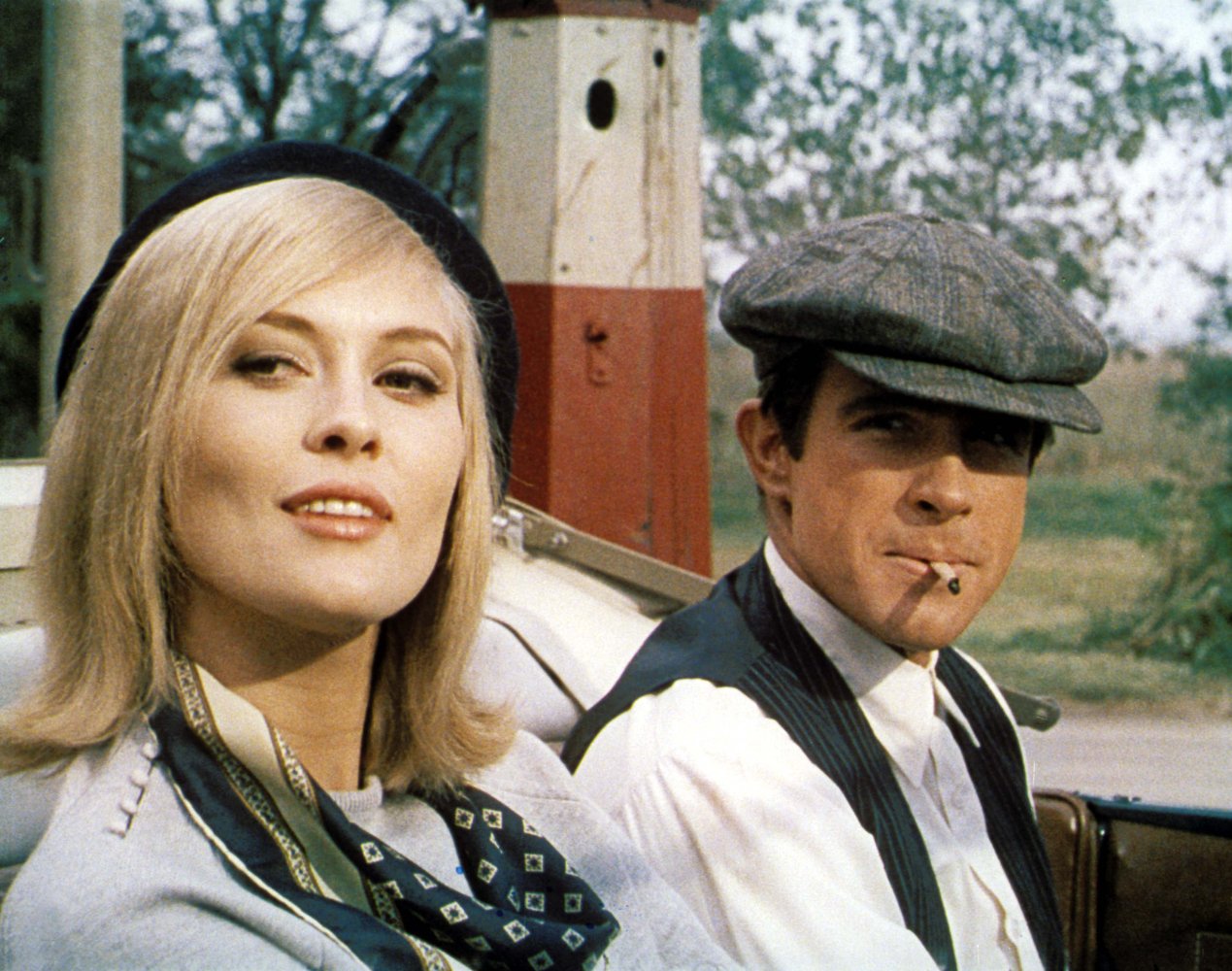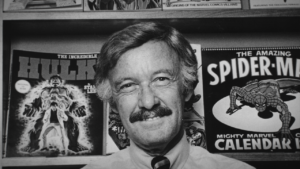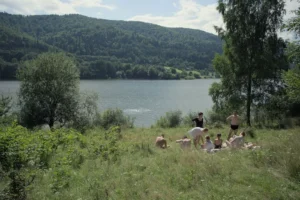‘Bonnie and Clyde’: 50 Years of Controversy
Half a century after moviegoers first saw Warren Beatty and Faye Dunaway pull off heists, the film still stirs up drama. Faye Dunaway, left, and Warren Beatty pursue bring Hollywood glamour to the big-screen story of notorious criminal couple Bonnie Parker and Clyde Barrow in "Bonnie and Clyde." (IMDb)
Faye Dunaway, left, and Warren Beatty pursue bring Hollywood glamour to the big-screen story of notorious criminal couple Bonnie Parker and Clyde Barrow in "Bonnie and Clyde." (IMDb)
This Wednesday, American film fans will flock to theaters for the TCM-sponsored 50th anniversary showing of the special restoration of “Bonnie and Clyde.” If you’re a patron standing in the ticket line or simply talk to anyone about the movie, you’re bound to hear some of the myths that have grown up around the film since its release in 1967.
The most prevalent myth is that Pauline Kael’s landmark review of the movie “saved” the film and paved the way for it to become a classic. In his book on the American New Wave of the late 1960s and early 1970s, “Easy Riders, Raging Bulls: How the Sex-Drugs-and-Rock’N’Roll Generation Saved Hollywood,” Peter Biskind quoted “Bonnie and Clyde’s” uncredited screenwriter, Robert Towne, that “Without her [Kael], ‘Bonnie and Clyde’ would have died the death of a fuckin’ dog.”
This and other myths about “Bonnie and Clyde” were on display earlier this year in Vanity Fair’s Hollywood 2017 issue in “The Critic and the Star,” a story by Lili Anolik:
The reviews were bad. The New York Times Bosley Crowther’s the worst: ‘a cheap piece of bald-face slapstick.’ [“reddened,” he added, “with blotches of violence of the most grizzly sort.”] And then Kael’s with its them’s-fighting-words opener: ‘How do you make a good movie in this cournty without being jumped on?’ Her review altered not only her own fate, securing her a position at the New Yorker (incidentally, Crowther’s cost him his position, the Times firing him after 27 years for missing both boat and point), it helped alter the fate of the movie. Says writer-director Paul Schrader, Bonnie and Clyde came out. It flopped. The critics saved it. … It became a hit, was on the cover of Time. Pauline’s review set that up. Nothing to date had shown the power of film criticism like that.’ The review helped alter movie history’s fate, too, because Bonnie and Clyde was the ripple that swelled into the American New Wave.
Indeed, “Bonnie and Clyde” was the first shot in the American New Wave and would be seen in retrospect as the avant-garde for films by iconic directors like Altman, Scorsese, Peckinpah, Kubrick, Coppola and Bogdanovich. And no one ushered in and surfed that wave better than Pauline Kael, whose review is best remembered today because it was written with such eloquence and compassion, and because it signaled to a large reading public the beginning of the career of the greatest American film critic.
But almost everything else in that passage from “The Critic and the Star” is, at best, questionable. Let’s start with “The reviews were bad.” Actually, considering how radical “Bonnie and Clyde” was, reviews from the mainstream critics were, on the whole, far from negative, albeit with some reservations.
Kael’s review appeared on Oct. 21, two months after the film’s first showing when the mainstream critics checked in, including favorable reviews by Hollis Alpert (Saturday Review, Aug. 5, 1967), Judith Crist (Vogue, September 1967), and Roger Ebert (Chicago Sun Times, Sept. 25).
In fact, though it is now forgotten, The New Yorker’s regular film critic, Penelope Gilliat, wrote a highly favorable review published Aug. 19, more than two months before Kael’s piece appeared. (It should be noted that Gilliat’s reply to the charge of glamorizing outlaws took the film’s disparagers head on: “Bonnie and Clyde could look like a celebration of gangster glamor only to a man with a headful of wood shavings.”)
Did Crowther’s review actually cost him his position at the New Yorker? No, he was fired for writing not one, but three highly negative pieces about the film, and for quarreling with readers who wrote letters to the Times in support of it.
What of Paul Shrader’s contention that “Bonnie and Clyde” “came out” and “flopped” and “became a hit” because “Pauline’s review set that up”?
That Kael’s review fueled a generation of young film enthusiasts and helped ensure “Bonnie and Clyde’s” place as a milestone in American cinema is certainly true. But B&C was far from a flop on its release, and Warner Bros. was far from indifferent in its promotion.
Following the death of co-screenwriter David Newman (the other was Robert Benton) in 2003, Steven Gaydos wrote a piece in Variety exploding the myths of “an enduring, but largely erroneous, fable: how critic Pauline Kael single-handedly saved the pic from instant extinction. According to this legend, Bonnie and Clyde was a failure in its initial 1967 release, garnering nearly unanimous critical dismissal, and Warner Bros. displayed, at best, no interest in the film.”
Gaydos noted that on Aug. 16, three days after its release, “Warners supported the film with a two-page spread in Variety and managed to find seven national critics who loved the film. …”
The National Society of Film Critics already had Bonnie and Clyde on its recommended list when Kael wrote her ‘defense’ of the film. It had opened in London three weeks earlier, with Warners again promoting the film in Variety, noting that it had received the best reviews ‘in London history’ and gushing that ‘It has done the biggest business in the theater’s history outside of My Fair Lady.’
The unsung hero of “Bonnie and Clyde,” Gaydos suggests, was a publicist named John Springer, who had been hired by Beatty (who was also the producer), and shrewdly manipulated both the good reviews and the controversy resulting from the negative ones. “Was it an independent publicist,” Gaydos asked rhetorically, “not Pauline Kael, who ‘saved” Bonnie and Clyde by simply, quietly, toiling at his craft behind the scenes?”
Most remarkably, half a century after its release, “Bonnie and Clyde” continues to be a subject of controversy. Scarcely a year goes by that some writer relating the history of the “real” Bonnie and Clyde—Bonnie Parker and Clyde Barrow—picks at the film for historical inaccuracy. From Kael’s review: “Why so many accusations of historical inaccuracy, particularly against a work that is far more accurate historically than most and in which historical accuracy hardly matters anyway?”
The film is also attacked for romanticizing outlaws. Kael again: “Will we, as some people have suggested, be lured into imitating the violent crimes of Clyde and Bonnie because Warren Beatty and Faye Dunaway are ‘glamorous’? Do they, as some people have charged, confer glamour on violence? It’s difficult to see how, since the characters they play are horrified by it and ultimately destroyed by it. Nobody in the movie gets pleasure from violence.”
On the 40th anniversary of B&C, The New York Times’ A.O. Scott wrote that the filmmakers—Beatty, director Arthur Penn, and screenwriters Newman and Benton—“seemed less interested in the moral weight of violence than in its aesthetic impact. … As we endure another phase in the never-ending argument about movie violence—renewed by the recent popularity of extremely brutal horror films like the “Saw” and “Hostel” cycles …” and “the harsh, righteous vengeance unleashed in the “Dirty Harry” and “Death Wish” movies appalled many of the same critics who dug the radical chic of “Bonnie and Clyde.”
Scott writes that he still gets “a kick out of ‘Bonnie and Clyde,’ but it’s accompanied by a twinge of unease, by the suspicion that, in some ways that matter and have become too easy to dismiss, Bosley Crowther was right.” Luckily for Scott, he didn’t continue to write about the film as Crowther did, and he remains a Times film critic.
How, one wonders, can serious critics continue to miss the point? Is it possible that Scott or anyone else would confuse the violence in “Saw” and “Hostel” and “Dirty Harry” and “Death Wish” with the violence in “Bonnie and Clyde”? Or does Scott really believe that the “moral weight of violence” is the same in every film? And how, by the way, does Scott believe that the moral weight of any film can be presented—except through aesthetics?
The “twinge of unease” that Scott still felt when watching the movie might have been taken as indication that the filmmakers were on to something. Kael wrote that people feel “uncomfortable about the violence, and here I think they’re wrong. That is to say, they should feel uncomfortable, but this isn’t an argument against the movie.”
Which is why “Saw,” “Hostel,” “Dirty Harry” and “Death Wish” are relegated to the status of frat boy fare and, 50 years after its release, “Bonnie and Clyde” is being celebrated in national showings.
Your support matters…
Independent journalism is under threat and overshadowed by heavily funded mainstream media.
You can help level the playing field. Become a member.
Your tax-deductible contribution keeps us digging beneath the headlines to give you thought-provoking, investigative reporting and analysis that unearths what's really happening- without compromise.
Give today to support our courageous, independent journalists.






You need to be a supporter to comment.
There are currently no responses to this article.
Be the first to respond.